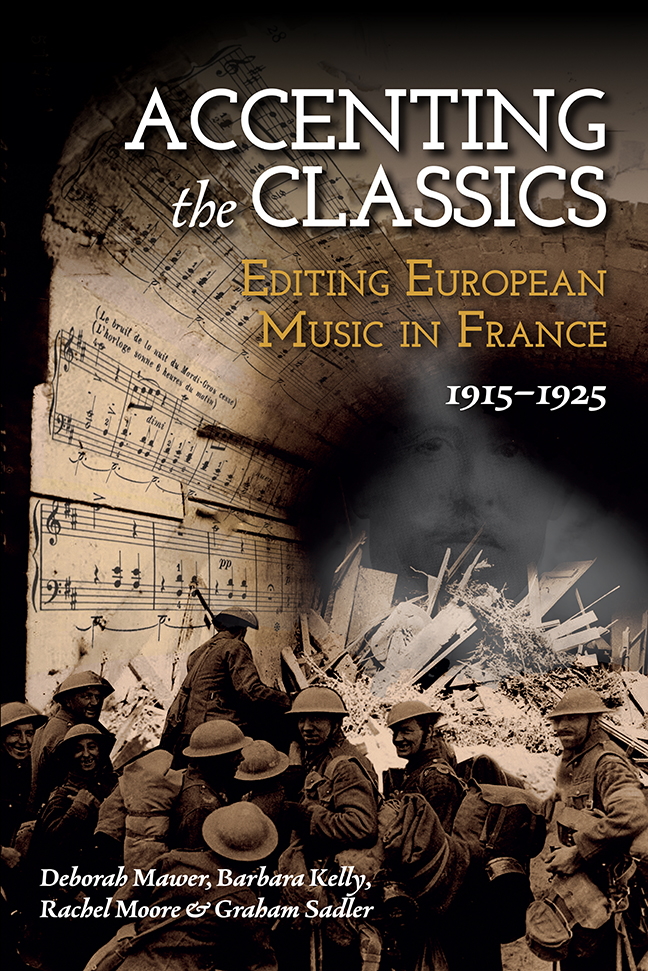Book contents
- Frontmatter
- Contents
- List of Figures
- List of Tables
- Notes on Co-authors
- Acknowledgements
- List of Abbreviations
- Note on the Text
- Introduction
- Part I Durand and His Édition Classique
- Part II Composer–Editor Case Studies
- Part III Beyond Editing: Pedagogy, Performance, Composition
- Afterword
- Select Bibliography
- Index
9 - The Édition Classique in Action: Pedagogy and Performance
Published online by Cambridge University Press: 10 January 2024
- Frontmatter
- Contents
- List of Figures
- List of Tables
- Notes on Co-authors
- Acknowledgements
- List of Abbreviations
- Note on the Text
- Introduction
- Part I Durand and His Édition Classique
- Part II Composer–Editor Case Studies
- Part III Beyond Editing: Pedagogy, Performance, Composition
- Afterword
- Select Bibliography
- Index
Summary
From its inception, Durand's Édition Classique had strong connections with educational institutions, and particularly with the Paris Conservatoire. The Conservatoire had been directly involved in wider French discussions during the First World War on the need for French editions of music to replace those of German firms, such as the Leipzig-based Breitkopf & Härtel and Litolff. It is thus unsurprising that so many volumes in Durand's Édition were edited by professors at the Paris Conservatoire. As noted in Chapter 2, a large part of Durand's focus in the Édition was on works for pedagogical use, ranging from pieces for young pianists, to graded anthologies, and methods, studies and exercises for a range of instruments. Chapter 9 explores the reciprocal relationship between Durand's Édition and music education and performance. It considers the important involvement of educational institutions in shaping the output of Durand's series. It also explores the efforts of Durand and the Département des Beaux-Arts to encourage dissemination of French editions to educational institutions beyond the capital city.
The focus then moves from pedagogy to performance, although the demarcations are not clear-cut since most performers also taught, both at the major institutions and privately. Among the Édition Classique's editors were many performers. Some were well-known figures, such as Marguerite Long (pianist), Louis Fleury (flautist) and Louis Fournier (cellist). Others advised on instrumental technique (violinist, Augustin Lefort) or piano fingering (Blanche Selva). All were active as performers, often in small ensembles, or with major orchestras. This chapter considers the repertoire they edited and their role in disseminating the edition through performance. Although it can be hard to pinpoint exactly which editions were used for particular performances, we can establish the repertoire they promoted in their professional lives.
Chapter 9 homes in on the case of Robert and Gaby Casadesus who owned and used many volumes of the Édition Classique alongside other contemporary editions. It is easy to determine which scores Robert used in his international concert circuit because of the detailed annotations on the scores, with lists of cities and dates where he performed. Drawing on documents at the Bibliothèque nationale de France and in the musical press in France, Britain and the Americas, we identify concerts in which these works figured, and discuss Robert Casadesus's particular approach to performing this repertoire.
- Type
- Chapter
- Information
- Accenting the ClassicsEditing European Music in France, 1915-1925, pp. 255 - 288Publisher: Boydell & BrewerPrint publication year: 2023

